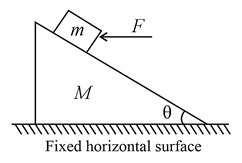In the figure shown acceleration of monkey relative to the rope if it exerts a force of on string will be
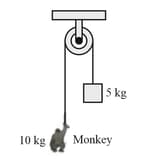


Important Questions on Newton's Law of Motion
In the given figure, inclined surface and pulleys are smooth. Strings and pulleys are massless. Acceleration of mass is
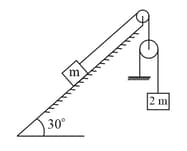
A balloon is tied to a block. The mass of the block is . The tension of the string between the balloon and the block is . Due to the wind, the string has an angle relative to the vertical direction. and . Assume the acceleration of gravity is . Also assume the block is small so the force on the block from the wind can be ignored. Then the - component and the -component of the acceleration of the block is


Find the force exerted by the block on the rod.
As shown to the right, two blocks with masses and are pushed by a force in both Case and Case . The surface on which blocks lie, is horizontal and frictionless. Let be the force that exerts on in case and be the force that exerts on in
case . Which of the following statement is true?

Block of mass is placed on a plank . A light support is fixed on plank and is attached with the block with a spring of spring constant . Consider that initially spring is in its natural length. Find the maximum compression in the spring, if the plank is given an acceleration . All the surfaces are smooth
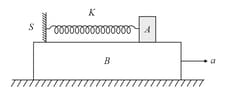
In figure, two identical particles each of mass are tied together with an inextensible light string. This is pulled at its centre with a constant force . If the whole system lies on a smooth horizontal plane, then the acceleration of approach of particles towards each other at the instant shown in figure is:
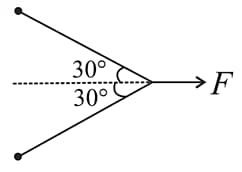
A block of mass lies on wedge of mass which lies on fixed horizontal surface. The wedge is free to move on the horizontal surface. A horizontal force of magnitude is applied on block as shown, neglecting friction at all surfaces, the value of force such that block has no relative motion w.r.t. wedge will be : (where is acceleration due to gravity)
